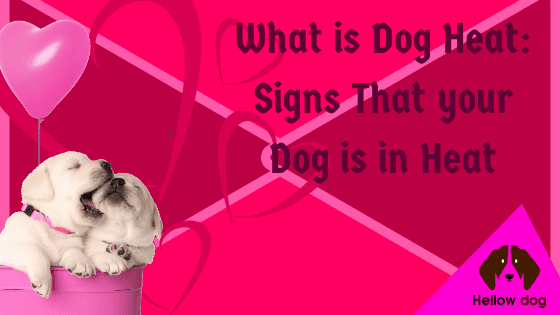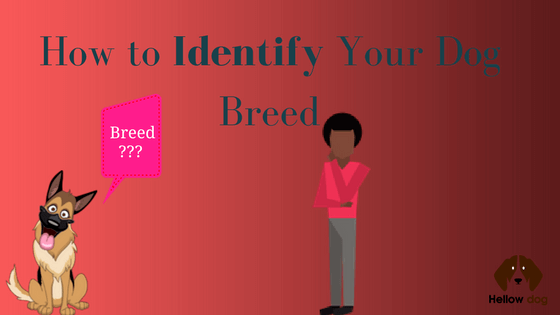You may notice significant behavioral changes in your female dog. Your friend who knows the dogs really well may suggest that your dog is in heat. Well, he or she can be true. Treating and pampering female dogs has arguably been harder for many folks.
It is true for some reasons, including when your dog is in heat. In some cases, dog heat can be more prevalent in households that are not interested in breeding more puppies. You may want to limit the number of your pets in your home.

That’s why it is very important to understand the meaning of the dog in heat, its symptoms, behavioral changes, and many other details. These are used to manage your dog’s reproductive cycles.
We are going to break down the topic at certain points as follows:
Dog in Heat – Meaning
The dog is in heat is the stage of happening in female dogs when they become more receptive to mating with male dogs.
It is a natural thing happening to your dog. The estrogen levels will first increase, then decreases significantly. In the end, the ovaries will release the mature eggs. If mating happens, your dog might be pregnant in no time.
To manage it, folks usually spay their dogs to prevent the heat cycle. Usually, they do it before the first heat cycle (we will explain it later).
What are the Symptoms of a Dog in Heat?
It is important to understand the symptoms when your dog is in heat. With such knowledge, you will be able to manage her reproductive cycle.
The symptoms have a thing to do with the heat cycle. That’s why it is better to learn the symptoms based on the part of the cycle. The heat cycle can be the difference between one dog to another. It can be anywhere from 7 days to 21 days. Some dogs even have a longer heat cycle.
-
Phase One – Proestrus
Phase one happens in the first week. Proestrus is the term to describe the initial stage of the heat cycle. It can happen from 7 days to 10 days. Some dogs even experience the phase for more than 10 days. The very first thing to notice as a symptom is the swelling of your dog’s vulva. But it does not always happen on the first day. You May notice it after a few days of phase one.
You may also see a few symptoms as mentioned below:
Behavior Changes: The changes can be mild to severe. That will depend on your dog’s heat. Assuming that you know your dog really well, you will notice a few changes in her behavior. For instance, she used to be ignorant. Now she is more caring for her owner.
Appetites: The significant appetite changes are often showing that the Dog is in heat. Your dog might skip her lunch a bit. In some cases, the dogs have no appetite at all.
Bleeding in the Vulva: Bleeding can vary from one dog to other.
Swelling of the Vulva: Check your dog’s vulva whether it is swelling or not.
Tail Tucking: Your dog might guard the vulva by tucking her tail. She usually positions her tail between her legs. If another dog approaches, there’s a chance that she will be sitting to cover up her vulva.
- Phase Two – Estrus
This usually happens in around the second week of the heat cycle.
As we mentioned, the estrogen level of your dog will decrease significantly. When this happens, the ovaries begin to send off the eggs for fertilization. You can read these symptoms to confirm:
Softer Vulva: The swelling causes the vulva to soften. This is enough for penetration.
Tail Flirting: you may need to see the images or videos of Softail flirting to understand more. Usually, the dog will turn her rear toward the male dog and position her tail upside, opening the access to her vulva.
- Phase 3 – Diestrus
It is the end of the heat cycle. You could see the symptoms below:
Vulva Swelling Disappearance: It does not happen overnight, though. In most cases, the swelling will be gone in a week.
Decreasing Lust: Your female dog will show a lack of interest in a mate. She will tend to reject the male dogs’ flirts.
The important thing to note is that the Diestrus or phase three can happen for a long time if mating was successful. That means at that time, your female dog has been pregnant.
- Phase 4 – Anestrus (If Breeding was not Successful)
It is the resting stage given that the breeding was not successful. It is the longest period which can span around 5 to 11 months. At that time, your female dog is inactive in terms of mating. It is also the phase before the proestrus or phase one.

Dog in Heat How Long
From what you’ve seen above, you may conclude that the heat cycle can be around 18 to 21 days. Yes, it is true. But the female dogs will only be receptive for 7 to 9 days. Male dogs only have this window of time to mate.
If you plan to breed more dogs, it is important to know whether your dog is in heat. Or, if you want to prevent mating, you could spay your female dog. Of course, consult with the veterinarian first before proceeding.
What to Do When Your Dog is in Heat?
That will totally depend on your willingness. In case you want to breed your dog, you should monitor the heat cycle so that it can mate at the right time.
But for some reason, if you want to avoid having more puppies, you need to act quickly. You may need to prevent your dog from a heat cycle. The vets recommend that your female dog be spayed. This will prevent estrus as well as pregnancy.
More and more vets recommend this procedure for health reasons. Research shows that spaying your female dog can decrease the risks of breast cancer and other diseases.
A Female Dog in Heat Behavior
Before knowing the behaviors, it is important to know that it can happen to all female dogs between 6 to 24 months old.
Here are the behaviors you should consider:
- Excessive Licking
- Hyperactive
- Some dogs become less active
- Aggressive behaviors toward other dogs
- Appetite changes
- Tail tucking
- Tail flirting
Male Dog in Heat Behavior
Everybody must agree that the heat cycle only happens to the female dog. But it can also change the behavior of the male dog. Keep in mind that these behaviors may or may not happen when the female dog is in heat. Here are some behavior changes that you could notice in your male dogs:
- Being sexually driven.
- Keep sniffing to find the “smell” of the female dog.
- Marking to show an interest in mating.
- Lack of focus – there’s a chance your male dog can’t help but arouse by a female dog.
- Behaving aggressively with one another.
Verdict
With this article, hopefully, you will understand the signs when your dog is in heat. It is not actually a dangerous thing for you or your dog. But it can be a problem for your family if you are not planning to own more dogs in the future for some reason. By understanding the symptoms of dog heat, you will be able to control your female dog’s re-productivity. You will also be able to decide whether you want your dog spayed or not. The decision is yours!







